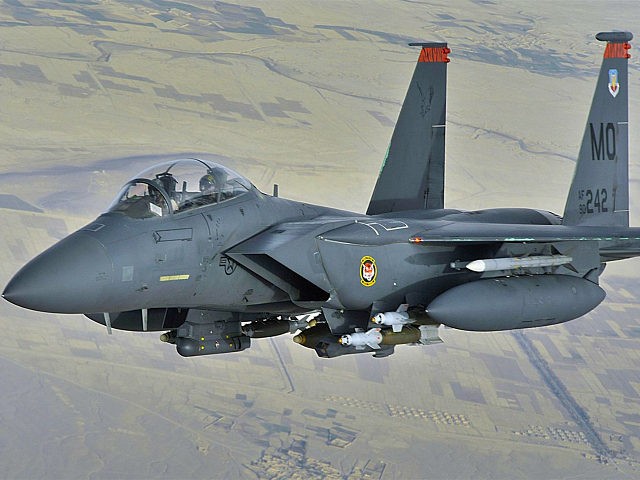The U.S.-trained Afghan Air Force (AAF) pulverized a Taliban compound with a laser-guided bomb, marking the first time the nascent military branch drops such a munition during combat, announced the U.S.-NATO mission in Afghanistan.
A video published by the U.S.-NATO mission in Afghanistan—Resolute Support—shows that “the drop resulted in a direct hit along the route of a major Afghan National Army clearing operation … the AAF used the laser-guided technology because of the target’s close proximity to civilians,” notes the international coalition in a statement.
The operation also assisted Afghan soldiers in demolishing equipment that Taliban terrorists had stolen, Voice of America (VOA) reports.
Brig Gen. Phillip A. Stewart, the head of the U.S-NATO Train Advise, Assist Command-Air (TAAC), noted:
The Afghan pilots have learned their trade during combat, and our advisors have expanded their skills in a deliberate step by step approach increasing the Afghan Air Force capability and this recent laser-guided bomb strike is an example of the success of the AAF and TAAC-Air’s efforts. The Afghan pilots do their jobs very well, and they can do it in any part of the country.
AAF pilots gained the capability to carry out airstrikes over two years ago and completed training to employ laser-guided bombs only three months ago.
Currently, the 8,000-strong Afghan air force reportedly flies around 100 sorties daily, of which ten percent are strikes. The AAF has 129 aircraft in its arsenal.
The AAF is expected to “grow to a force of 11,000” while “the fleet is expected to triple in size” under Afghan President Ashraf Ghani, the international coalition notes.
AAF is a component of the Afghan National Defense and Security Forces (ANDSF) that is essential for the Afghan military to operate independently of U.S. forces.
The U.S.-NATO mission points out:
The ability to conduct laser-guided strikes is part of Resolute Support’s plan to develop a professional, capable, and sustainable AAF, giving the country a lethal advantage over the enemy. While the AAF has the ability to employ laser-guided munitions in combat, they won’t always use this technology. The AAF is able to successfully strike within ten meters of a target without laser guidance
AAF personnel carried out the March 22 operation that employed laser-guided bombs against the Taliban in Afghanistan’s western Farah province located along the country’s border with Iran, “with minimal advisor input,” the U.S.-NATO mission reports.
In December 2017, U.S. Air Force Brig. Gen. Lance Bunch, the director of future operations for Resolute Support, declared:
Key pieces that you’re seeing is that the Afghan Air Force itself, one of the more lethal organizations they have, and one that we’re looking to triple in size by 2023, is conducting significantly more air operations in direct support of the ANDSF on the battlefield, to the tune of 500 more sorties this year than they did the year before.
Throughout 2017, the ANDSF, which also includes police units, carried out combat operations with the “lowest level of support from the coalition forces” in the nearly 17-year-old war “showing they are, in fact, leading the fight and we are there to advise and enable them,” noted Bunch.
Despite the billions of American taxpayer funds invested in developing the Afghan troops over the duration of the ongoing war, the forces continue to rely on U.S. support and suffer from capability lapses.
Of the nearly $122 billion the United States has spent on nation-building efforts since 2001, about $75 billion (60 percent) has gone to developing the ANDSF, reports the U.S. Special Inspector General for Afghanistan Reconstruction (SIGAR), a watchdog agency.
VOA notes:
Battlefield activities are due to increase with the advent of spring in Afghanistan. U.S. military commanders anticipate Afghan ground and air forces will do a better job in the coming fighting season while battling the Taliban, who control or contest about 45 percent of the country.
“The Afghan government, backed by the international community, also has renewed its efforts to find a negotiated end to the war and recently offered unconditional peace talks to the Taliban,” it adds. “The Taliban, however, have seemingly ignored the overture, raising fears of another bloody year in the 17-year-old war.”

COMMENTS
Please let us know if you're having issues with commenting.